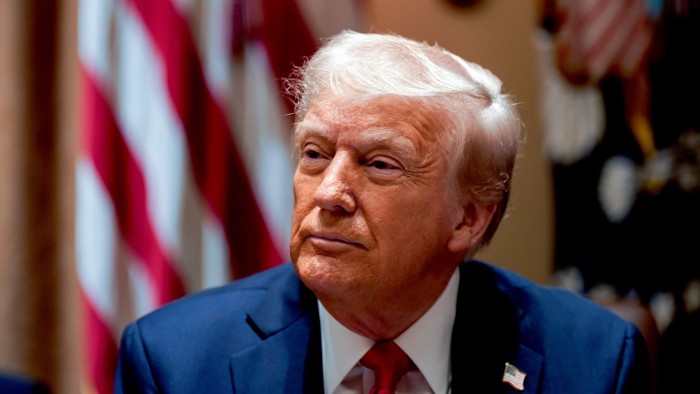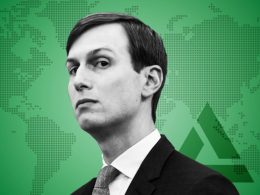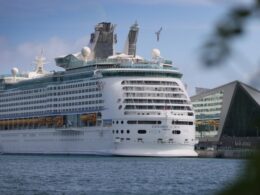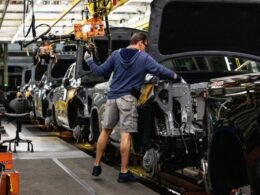Welcome to Trade Secrets, those of you not enjoying an Easter Monday break. Today we examine what solid and lasting gains Donald Trump has got so far out of his strategy of negotiating deals with a tariff gun at his trading partners’ heads (none) and what he’s likely to get (probably not much). Also, the evidence is mounting daily that US-China trade is, unsurprisingly, in serious trouble. Charted Waters, the section in which we examine the data behind world trade, is on cocoa prices.
Get in touch. Email me at alan.beattie@ft.com
Babbling about bowling balls
THIS JUST IN: Trump has no consistent strategy on trade and is bad at negotiating. Anyone who continues to think his tariff strategy is all a cunning plan should read the Wall Street Journal’s account of the so-called “pause” in additional bilateral tariffs, in which Treasury secretary Scott Bessent and commerce secretary Howard Lutnick literally had to wait until chief China hawk Peter Navarro was elsewhere in the White House before getting Trump to sign off on it, the usual Topkapi Palace vibe.
Trump has made some obvious tactical mistakes. As the Peterson Institute’s Adam Posen points out here (also argued by my FT colleague Gideon Rachman), by picking a fight with China, Trump has made the strategic error of cutting off trade with a key source of inputs for the US economy. (I’m a bit less concerned about critical minerals than commentariat consensus seems to be, but I’ll get into that in future pieces.)
Trump’s caprice, allegedly designed to sow confusion among trading partners, is likely to make them shy away from doing binding deals as well. Why make agreements with someone who can’t even keep his story straight? Politico reports that Trump’s strategy to force China to the table is to offer a bunch of deals to other east Asian countries, cutting Beijing out of supply chains to compel it to negotiate with the US. Predictably, China is warning those countries against agreeing. Leaving that aside, why would governments make deals just to be used as leverage to strengthen the US-China trading relationship at their expense?
If these governments do give Trump anything in talks, they’ll try to make up a fancy-looking gift basket that actually comprises some dusty old tchotchkes they’ve scavenged from the back of the cupboard. The US sounds hopeful about a deal with Japan. (Mind you, it’s been sounding hopeful for a while on that subject now, with the Japanese sounding much cooler.) But the deal doesn’t sound transformative. Nikkei here is reporting that Japan might create loopholes in its car safety regime for US imports. But it’s likely to be the same minor stuff it already offered in the Trans-Pacific Partnership that Trump pulled out of in 2017.
Trump went on a rant over the weekend about trade barriers, mentioning the Japanese “bowling ball test”, which is something he’s gone on about before.
This might be slightly less raving than it sounds and revealing of a genuine issue, if hardly one of unfair trade. As far as we can tell, it’s probably a reference to the fact that, relative to the US’s idiosyncratic standards, the international car safety rules that Japan uses focus on the danger to pedestrians as well as the car’s occupants. There’s a test in which a weight designed to represent a pedestrian’s head is fired at a car hood (“bonnet” for Brits) to find out how much give there is. A hood that absorbs some of the impact rather than remaining rigid will cause less injury. (Hence, Trump’s assertion here that the test fails if it creates a dent has it exactly backwards.)
This in turn reflects a broader phenomenon, this son of a former senior safety engineer writes. The US opted out of a bunch of regulatory regimes decades ago — in this case the UNECE vehicle safety standards, which began in 1958. It’s one of the things that hampers US car and other manufacturers selling abroad (something I wrote about in last week’s column). A Cybertruck was rightly seized and impounded by the British police earlier this year. Cybertrucks are banned in the UK, partly for the danger they pose to pedestrians.
As it happens, successive US administrations — Bill Clinton’s, George W Bush’s, Joe Biden’s — did work on aligning international vehicle safety standards. Following an initiative of Biden’s transportation secretary Pete Buttigieg, the US drafted regulation on pedestrian head protection (here). I’m guessing it won’t go much further.
If Trump’s big achievements are likely to include minor concessions in safety tests the US was already offered a decade ago — which won’t affect the fact that the big three US manufacturers don’t make cars Japanese consumers want anyway — then sure, offer him that. Whatever keeps him happy.
The bad news starts to mount
So what news from the real world of trade in the form of parcels, containers, ships and aeroplanes? And could the Trump administration contrive to find a way to damage things further? Answers, respectively: “really not good”, and “yes, but could be worse”.
The news of US-China disruptions as a result of Trump keeps piling up. Thanks to the postponed abolition of the $800 de minimis tariff exemption, supposedly now due on May 2, Hong Kong’s post office will no longer send parcels to the US. DHL is suspending deliveries to the US of parcels worth more than $800 because of increased paperwork. Ford has stopped exports of some cars from the US to China because of Beijing’s retaliatory tariffs. A Boeing jet intended for use by a Chinese airline was returned to the US on Saturday.
The word from the shipping industry is that there is, unsurprisingly, a collapse in demand for container space to the US from China. Ryan Petersen, chief executive of the global logistics company Flexport, said last week that in the week since the tariffs hit, ocean freight bookings from China were down about 50 per cent across the industry. Fifty. Per. Cent.
A chunk of this is shifting to Vietnam-US routes instead, which he says his company has seen rise above the China-US trade in size for the first time. But as Freightos, the digital freight booking platform, showed in a survey of small US importers, the uncertainty is crippling for American businesses.
There was one moderately good, or at least not disastrous, piece of news on the container-shipping front last week. You may recall the US trade representative’s office has been mulling plans for hefty fees of up to $1.5mn per US port call for ships built in China or operated by Chinese companies. This wheeze, supposedly aimed at building up the US merchant fleet, was a poisoned chalice handed to it by the Biden administration. The World Shipping Council reckoned the original plans would have doubled the cost of shipping exports.
The proposals published last week by USTR, which will now go out for consultation, are much more modest. They are based on the amount of cargo rather than a flat fee per ship, and levied per single ship voyage rather than on each port call. It’s still a bad idea, but at least it’s not as wantonly destructive as first planned. I guess that counts as a result these days.
Charted waters
An Easter-themed chart shows that cocoa futures, although they’re still high on a decade-long view, have come down sharply since the episodes of woe-is-us globalisation-is-dying overreaction over the past couple of years. My contacts in the child world report that chocolate remains widely available.

Trade links
-
The FT looks at the international threat from Chinese controls on rare earth sales.
-
The think-tank Bruegel looks at how Trump’s tariffs will affect Europe.
-
A lovely FT piece on how US tariffs are affecting goods being sold in New York’s Chinatown.
-
In an apparent sign that the US is deliberately trying to lose the global battle for influence with China, the New York Times reports that the Trump administration is considering shutting most of its operations in Africa.
-
ICYMI, here is last week’s Q&A I did with two FT colleagues on Trump and the new world order.
Trade Secrets is edited by Harvey Nriapia
Source link









